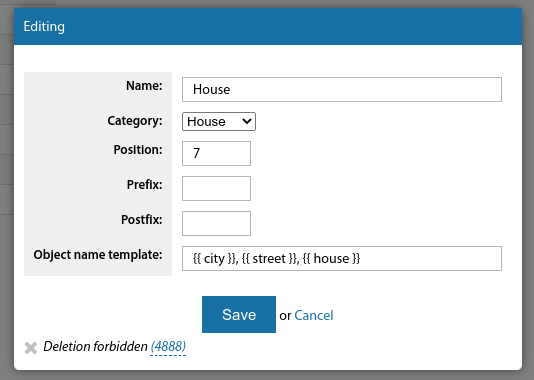Address system
ATTENTION: This section is relevant for ERP "UserSide" versions 3.13 and later. For versions earlier than 3.13 - use separate pages Regions and Settings - Addresses.
In ERP "UserSide" most of the objects (users, communication nodes, FOCL etc.] have different addresses or may be without address.
The concept of Address/address unit and 'Building/house' must be clearly differentiated. An address is simply a name. A sign on a building, if you prefer. A building is a complete, unified structure. One large building can have many addresses at the same time (e.g. a house which is standing on 4 streets at once). In the same way - one address may hide many buildings (for example - a property complex, polygon or an area with many buildings).
In ERP "UserSide" we have tried to make all address hierarchies of different countries flexible. Cities can include other cities, streets can include districts and so on.
The scope of objects in the system depends on the availability of a particular address object to the current employee. This makes it possible, for example, to forbid employees of some localities to see users of other localities.
If the objects are not linked to an address, they are available to all employees who have the option "Objects without address" selected.
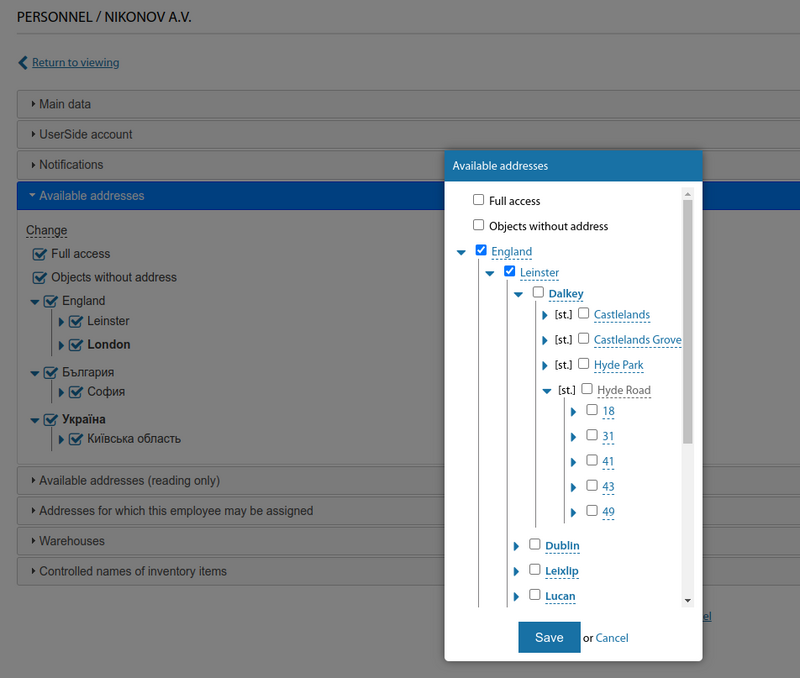
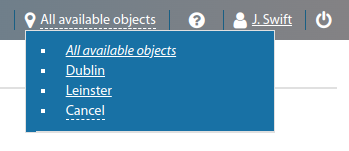
Starting from version 3.18:
In the form for editing an address unit, the address type selector displays its token in addition to the type name.
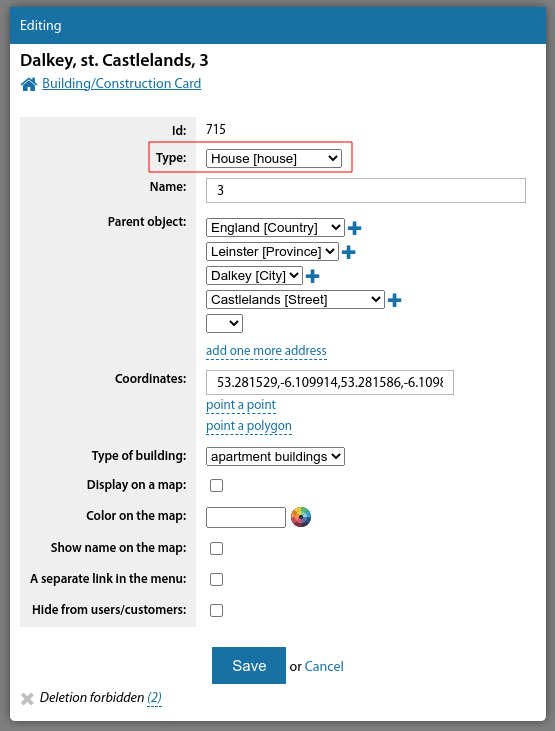
Address unit tokens
"Address unit tokens" are used for interaction with external systems, for use in APIs, for operation of billing interaction modules.
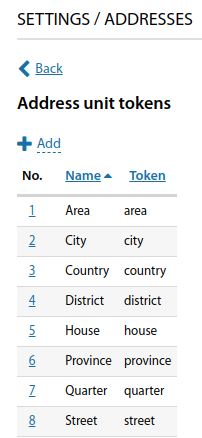
For example, in the ERP "UserSide" you can add the types of address units "City" and " Village" and specify the token "city" for both of them. In this case, when interacting with billing, the address objects from these address units will be equal and all will be considered as settlements. For interaction with billing, the following tokens are used: "province", "district", "city", "area", "street", and "house".
Types of address units
" Settings => "Addresses" => "Types of address units"
This section is used to create types of address units - they can be completely optional - countries, continents, streets, avenues, water areas, etc.
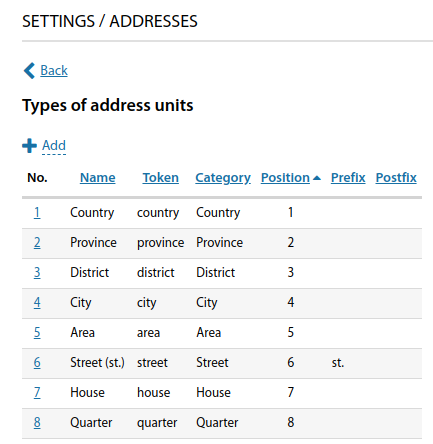
Despite the fact that the configuration of the address hierarchy is very flexible, there are still basic categories that can be assigned to these address units (e.g. street, locality) for compatibility with external systems.
